【Graphite】China Dominates 70% of Supply, Australia Gets Anxious! Five Mining Companies...

Graphite electrodes are primarily used in electric arc furnace (EAF) steelmaking, serving as a crucial high-temperature conductive material. They are also widely applied in the aluminum industry, electrolytic cells, and chemical equipment as conductive and heat-resistant components.
【Graphite】China Dominates 70% of Supply, Australia Gets Anxious! Five Mining Companies Join Forces to Seize the Discourse Power in Anode Material Graphite
In the 16th century, the first large graphite deposit was discovered in the Borrowdale region of the UK. The graphite there was of extremely high purity and hardness, and people at the time initially mistook it as a form of lead. This is how the term "pencil lead" was born.
The method of graphite mining is not always the same as metal mining. In Sri Lanka, there exists a form of pure natural graphite called "lump graphite," which is of the highest purity and occurs in vein form rather than as a deposit. People can literally dig it out by hand.
In the global push for decarbonization and the development of green technologies, this crystalline allotrope of carbon has become a strategic material. It is not only used in electric vehicle batteries but also in nuclear fusion and the hydrogen economy.
In recent years, exploration activities from Australia to Alaska have increased the world's total natural carbon (graphite) resources by more than 3.7 billion tons. Although China dominates the global graphite supply chain — from artificial and natural graphite production to refining — North American companies are still striving to claim a share of the graphite market.
China's dominance in the graphite market is not solely determined by geology. While China does have abundant graphite reserves, its leadership is more a result of government subsidies, looser environmental standards, and stronger refining capacity, rather than a simple raw material advantage.
As graphite mining capacity outside of China gradually comes online, it is expected that by 2027, natural graphite output will grow at an annual rate of 6% to reach 1.5 million tons. Australian mining companies are increasingly active in contributing to this growth.
Graphite has been included in the Australian federal government's critical minerals list. Although Australia currently has no large-scale producing graphite mines, the country holds nearly 8 million tons of economically demonstrated resources and 5 million tons of ore reserves. These resources and reserves are distributed across three states: Queensland, South Australia, and Western Australia.
China remains the world's largest natural graphite supplier, producing more than 70% of the global total. However, not only Australia, but also North America, Africa, Asia, and Europe are all seeing more graphite mines under development.
According to the European Carbon and Graphite Association (ECGA), assuming a mining recovery rate of 70%, the total graphite contained in globally proven resources exceeds 350 million tons, equivalent to 245 million tons of graphite products covering all flake sizes.
Benchmark Mineral Intelligence forecasts that by 2030, natural graphite demand could surge by 140%. This means the world will need to bring about 30 new natural graphite mines and 12 artificial graphite plants into production to close the supply-demand gap.
Traditionally, graphite was used in lubricants and steelmaking, but today its importance is increasingly tied to its application in battery anodes. Graphite can be obtained either by mining (natural graphite or flake graphite) or by processing green petroleum coke through boiling and calcination (artificial graphite).
In general, natural graphite requires less energy consumption and emits less carbon than artificial graphite, as the latter requires extremely high temperatures for production.
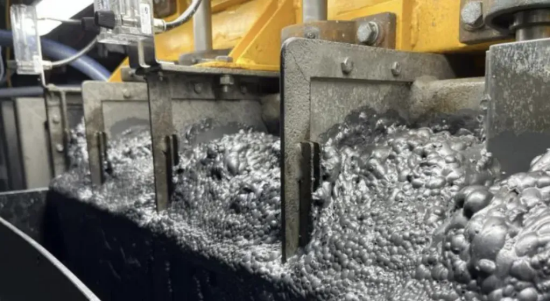
Australia: Competing in the Graphite Market
With government support and advanced processing technologies, Australian companies have made significant progress in graphite development. Among the more active players are Buxton Resources (BUX), Ecograf (EGR), Syrah Resources (SYR), Talga (TLG), and Triton Minerals (TON). (Carbon Bond note: the abbreviations in parentheses are Australian Securities Exchange codes.)
International Graphite (IG6) is expected to become a producer of industrial graphite products in Australia, serving both traditional manufacturing and the emerging battery market. The company is advancing the Springdale–Collie Graphite Project and an integrated anode materials production project in Western Australia. Backed by a AU$4.7 million subsidy, it is accelerating feasibility studies while building a micronizing plant.
In late July, International Graphite signed a cooperation agreement with Norway-based Arctic Graphite and Graphite Investment Partners to build an expandable graphite processing plant in Germany.
Meanwhile, Kingsland Minerals (KNG) is developing the Leliyn Deposit, which is expected to become Australia's largest graphite resource project. Its resources are estimated between 700 million and 1.11 billion tons, with a total graphite carbon (TGC) grade of 7.8%. Further drilling suggests significant potential for resource expansion.
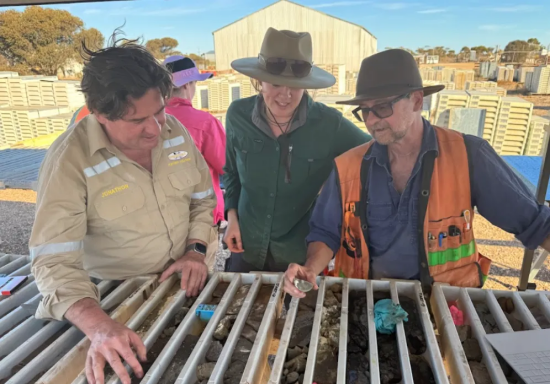
Lincoln Minerals (LML) is an emerging player in Australian graphite exploration. Its flagship Kookaburra Graphite Project (KGP), located on the Eyre Peninsula in South Australia about 35 km north of Port Lincoln, is under development.
The Kookaburra Project's measured, indicated, and inferred resources are estimated at 12.8 million tons with a TGC grade of 7.6%. In May this year, multiple tests conducted by two independent Australian laboratories confirmed that graphite from this project achieved battery-grade purity (TGC ≥ 99.95%).
Lincoln Minerals CEO Jonathan Trewartha told Australian Mining that:
"With the growth of electric vehicles and renewable energy industries, demand for battery-grade graphite is increasing, and the global graphite market is undergoing a structural shift."
He added:
"This is especially true for natural flake graphite, a key component of lithium-ion battery anodes. At the same time, geopolitical dynamics — such as China's recent graphite export restrictions — have made building a stable ‘non-China' supply chain more urgent."
"Lincoln Minerals, with its 100%-owned Kookaburra Project on South Australia's Eyre Peninsula, is well positioned to meet this demand. The Kookaburra Project is one of the highest-grade undeveloped graphite projects in Australia, with measured, indicated, and inferred resources totaling 12.8 million tons at 7.6% TGC."
"Importantly, recent independent testing confirmed that the graphite concentrate from the Kookaburra Project can be refined to battery-grade purity (TGC ≥ 99.95%), which is the key standard for downstream lithium-ion battery applications. This makes the Kookaburra Project one of the few in Australia capable of supplying high-quality graphite to the fast-growing anode materials market."
Lincoln Minerals has also laid out a vertically integrated strategy, including downstream value-added research into battery anode materials (BAM) production. This gives it a competitive edge over peers, particularly given its strong environmental credentials, convenient infrastructure access, and strategic location near Port Lincoln.
The company plans to complete a preliminary feasibility study on battery anode materials to evaluate downstream processing potential — including purification and shaping technologies — to produce coated spherical graphite for lithium-ion battery anodes.
Currently, Lincoln Minerals is advancing preliminary downstream BAM studies to validate processes and added-value potential, while supporting future financing and offtake negotiations. The company plans to complete an updated Stage One feasibility study before FY2027, covering updated costs, logistics, mining plans, and metallurgy.
Lincoln's strategy also focuses on supplying graphite to battery anode manufacturers, automotive OEMs, and downstream processors — especially those looking to reduce dependence on China and secure stable, traceable, high-grade graphite from Australia and other Tier-1 jurisdictions.
As part of its commercialization plan, Lincoln is actively negotiating with potential offtakers and strategic partners.
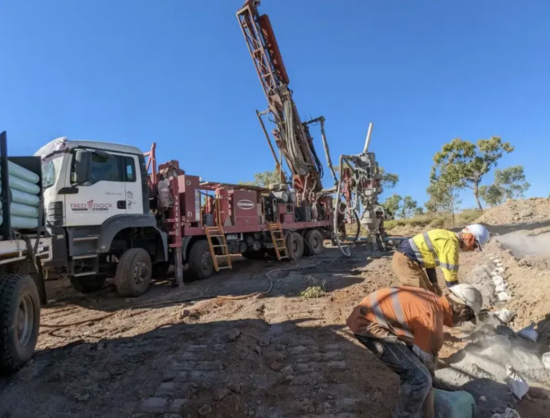
Ambitious Australian Companies
Nearby Lincoln, Renascor Resources (RNU) is developing the Siviour Graphite Deposit on the Eyre Peninsula. The deposit lies 120 km northeast of Port Lincoln and 150 km southwest of Whyalla.
Renascor is well funded: as of June 30, 2025, the company held AU$105 million in cash and secured a conditional AU$185 million loan from the Australian government's AU$4 billion Critical Minerals Facility.
Renascor is also developing a vertically integrated anode materials business, including upstream mining and processing as well as downstream BAM plants — where graphite concentrate will be turned into purified spherical graphite (PSG) for lithium-ion battery manufacturers.
Its downstream plant has received provisional development approval. The demonstration plant, designed to continuously process Siviour graphite concentrate into PSG, has completed design, site preparation, equipment procurement, and testing.
Like Lincoln, Renascor claims its purification process has potential advantages over traditional spherical graphite purification — it avoids hydrofluoric acid (HF).
The demonstration plant's operating experience will feed into the detailed design stage and guide the construction and operation of a large-scale commercial PSG plant.
Renascor Managing Director David Christensen said:
"This plant will allow us to demonstrate and optimize our HF-free purification process, and provide globally competitive Australian spherical graphite to replace China's current dominance in this sector."
He added:
"With the project entering construction this quarter, we are committed to establishing Renascor as a high-value-added processor in South Australia and a strategic supplier of high-purity BAM to the international market."
Another South Australian graphite company, Quantum Graphite (QGL), is advancing the Uley 2 Flake Graphite Project, which includes the previously producing Uley Mine and the Mikkira Deposit. The project has full permitting and can commence development anytime. QGL has also signed a binding offtake agreement with a European trading group to supply 50% of project output for at least five years.
Through its joint venture "Sunlands Power" with Sunlands Energy, QGL plans to use coarse flake graphite from Uley for thermal energy storage media in TES graphite batteries for grid-scale long-duration storage.
In March 2025, the Australian government designated the Uley 2 project and Sunlands facilities as "Major Projects."
Meanwhile, Green Critical Minerals (GCM) owns the McIntosh Graphite Project in Western Australia, one of Australia's largest graphite resources, estimated at more than 30 million tons.
The company's recently commissioned production facility is now operating, producing ultra-high-density (VHD) graphite blocks sized 60×100×60 mm. It is also advancing production of larger blocks up to 200 mm in length and 160 mm thick.
GCM is working with universities and industry partners to validate the superior thermal performance of its VHD graphite in high-demand applications.
Managing Director Clinton Booth stated:
"Importantly, we are not looking for solutions for a future market — we are delivering high-performance thermal products into markets with current strong demand, where customers are actively seeking better and more cost-effective materials."
GCM has adopted a multi-channel distribution strategy, including partnerships with online retailers. This enables quick market entry without waiting for bulk orders.
It is also engaging with data center suppliers such as GreenSquareDC and entering the Korean market, creating large-scale near-term business opportunities. The company is accordingly adjusting its supply chain.
Booth added:
"With our VHD graphite production facility now operational, GCM is shifting from early promotion to active commercial execution, focusing on meeting demand, scaling production, and maintaining quality during mass production."
"We have optimized our operational processes to ensure efficiency, scalability, and consistently high product quality. We are building inventory to be ready for customer orders and demand surges."
Severe Shortage
Lincoln Minerals, like GCM, is confident it will become an important player in the global graphite market. Trewartha emphasized that the Kookaburra Project's inclusion in Australia's Critical Minerals Prospectus underscores the urgency of bringing such mines into production. This aligns with Benchmark Mineral Intelligence's forecast that 30 new natural graphite mines will be needed in the next five years.
He told the press:
"Both the International Energy Agency (IEA) and Benchmark Mineral Intelligence have clearly indicated that by 2030, dozens of new graphite mines will be required to meet battery demand."
"Natural graphite is a key material for lithium-ion battery anodes, and the global supply chain faces increasing concentration risk — especially considering China's dominance in both natural and processed graphite."
"In this context, projects like Kookaburra are not just important — they are indispensable."
"The Kookaburra Project is one of Australia's highest-grade undeveloped graphite projects, located in a low-risk jurisdiction with strong infrastructure, port access, and good ESG credentials. Multiple independent lab tests have confirmed its ability to produce battery-grade graphite (TGC ≥ 99.95%)."
Trewartha stressed that without new graphite production outside China — especially in jurisdictions like Australia — the global EV and battery supply chain will struggle to achieve energy transition goals.
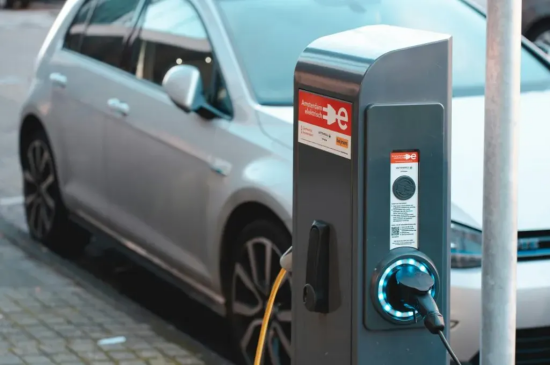
Clean and Responsible
The global battery and critical minerals industries are increasingly focused on clean, responsible processing. Lincoln Minerals' HF-free process aligns with these expectations, positioning it as a forward-looking, low-impact supplier of anode materials.
HF is one of the most hazardous chemicals in graphite processing, posing risks to people, communities, and the environment. By adopting an HF-free process, Lincoln eliminates these risks, avoids toxic waste streams, and strengthens its social license to operate.
Trewartha added:
"Similarly, downstream customers are seeking cleaner, safer supply chains. HF-free anode materials not only meet these expectations but also give Lincoln a commercial differentiation advantage, helping us become a sustainable and competitive supplier."
As a forward-looking low-impact supplier, Trewartha outlined the key trends that will drive both Lincoln's growth and the global graphite market over the next five years:
"By 2030, global natural graphite demand is expected to grow over 140%, driven primarily by lithium-ion battery anode demand. Lincoln is well positioned to contribute significantly to this growth."
"The rapid growth of the EV industry, battery gigafactories, and data centers — especially in North America, Europe, and Asia — will continue to drive graphite demand. Lincoln's high-grade project and battery-grade test results are well aligned with this demand."
"With rising geopolitical tensions, the global battery supply chain is gradually reducing dependence on Chinese graphite. South Australia, as a Tier-1 jurisdiction, offers customers a safe, compliant, and attractive source of graphite."
"Lincoln plans to produce coated spherical purified graphite, meaning it will not only target the natural flake graphite raw material market but also enter the higher-margin, value-added anode materials sector — opening up broader commercial opportunities."
Feel free to contact us anytime for more information about the Graphite Products market. Our team is dedicated to providing you with in-depth insights and customized assistance based on your needs. Whether you have questions about product specifications, market trends, or pricing, we are here to help.
No related results found
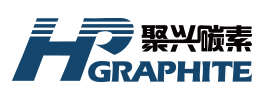




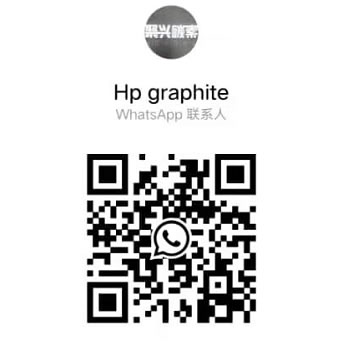


0 Replies